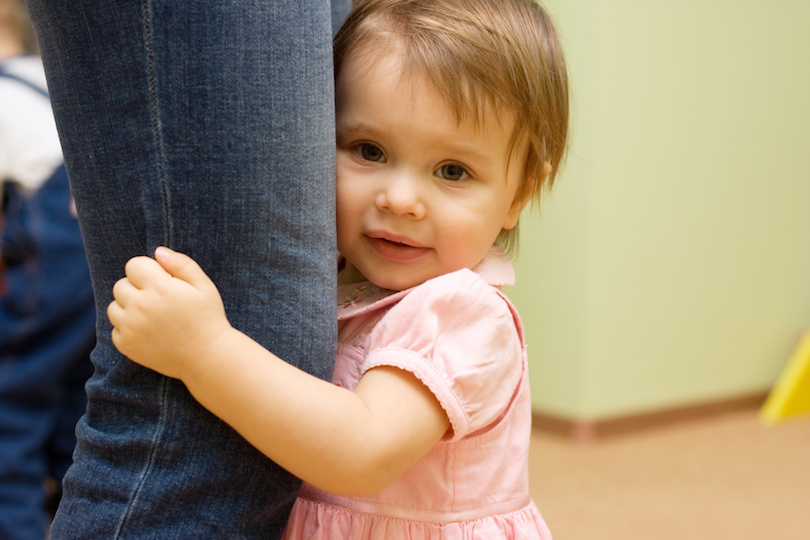During these months, your baby may seem like two separate babies. First, there is the one that is open, loving and outgoing. Then, there is the one that is anxious, clingy, and easily frightened by things. Your baby is now old enough to tell the difference between people, places and things that she knows and doesn’t know.
Social and emotional milestones that you can expect your baby to reach at this time include:
- Shy or anxious with strangers
- Cries when mother or father leaves
- Enjoys copying people when playing
- Fearful in certain situations
- Wants mom or regular caregiver over everyone
- Repeats sounds and signs for attention
- Finger-feeds him/herself
- Extends arms or legs while getting dressed
- Tests parents when eating – seeing what reaction he/she gets when refusing to eat or throwing food on the floor.
Tip: Let your baby know that it is important for him to eat. It is also important that your baby knows from the beginning that throwing their food is a “no-no”. If baby continues this behavior, take the food away. Baby will eventually get hungry and cry for the food back. Give it back and remind him that he is not allowed to throw his food. Your baby will eventually learn that if he throws his food, he will get it taken away.
- Tests parents when crying – seeing what reaction he/she will get when throwing a temper tantrum after parents leave the room.
Tip: If your baby is in a safe place, the best thing to do is to let your baby cry, leave the room, and remain out of sight but within earshot until baby calms down. Once baby calms down, quickly go back into the room and give baby lots of hug, kisses, and praise. This way, you are rewarding the behavior of self-soothing and baby will start to get the idea that she won’t get what she wants or attention for throwing a tantrum.
If baby cries due to pain or an injury, respond calmly by saying something like: “you’re ok, mommy’s here,” and give lots of hugs and kisses and help them fix whatever hurts. This will also help teach your child to stay calm through these times.
Source: Caring for Your Baby and Young Child, 6th Edition: Birth to Age 5 (American Academy of Pediatrics)



